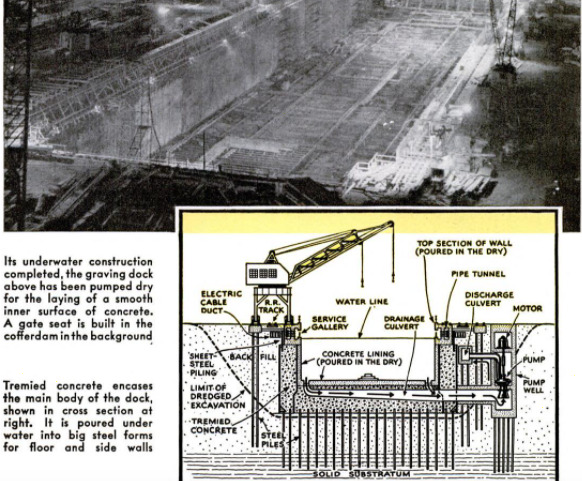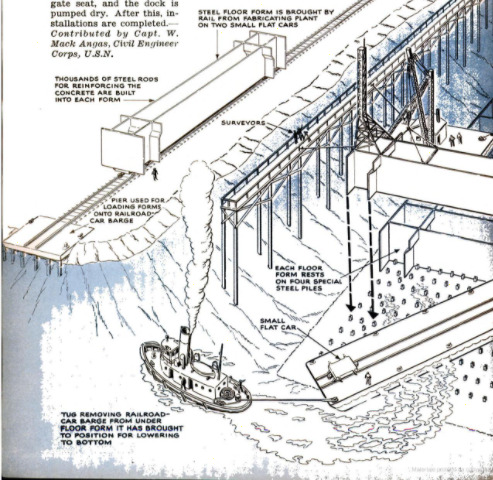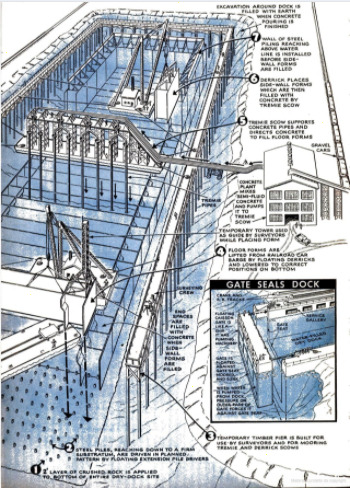Underwater construction for naval docks
Item
-
Title (Dublin Core)
-
Underwater construction for naval docks
-
Subject (Dublin Core)
-
en
Ships
-
Article Title and/or Image Caption (Dublin Core)
-
Underwater construction speeds naval dry docks
-
extracted text (Extract Text)
-
MAJOR dry docks are being built for the
Navy almost completely under water
in strategic areas where the soil is too un-
stable for big excavations in which the con-
struction can be done “in the dry.” This
startlingly new type of naval building is
known to engineers as the “tremie” method
—or pouring large quantities of high-grade
concrete under water through pipes called
“tremies.”
It is providing the Navy with new grav-
ing docks for repair and overhaul of fighting
ships that must be sent with dispatch to re-
join the fleet. And it gives the Navy these
bases where they are most needed—no mat-
ter how difficult the site—without the long
delay required for erecting big cofferdams
that would otherwise be needed to keep wa-
ter out of the excavations in which the docks
are built.
Now a site is simply dredged to the de-
sired depth, then leveled by barge-controlled
drags, and construction begins. First come
the steel foundation piles, driven down to a
firm substratum by a floating pile driver
equipped with extension leads and a steam
or compressed-air hammer capable of work-
ing under water. They must fit a pattern
in both line and grade, and those that cannot.
be driven down far enough are cut off by
divers using underwater
torches.
Qn certain of these piles
are laid huge floor forms
having neither top nor bot-
tom, each watched carefully
by two teams of surveyors
to be sure it goes down ac-
curately. Meanwhile, the
tremie scow sets to work,
filling the forms with con-
crete. Side walls are next
laid and filled. A steel cof-
ferdam, sealing the opening,
is then put up to provide a
dry space for building the
gate seat, and the dock is
pumped dry. After this, in-
stallations are completed.
Contributed by Capt. W.
Mack Angas, Civil Engineer
Corps, U.S.N.
-
Language (Dublin Core)
-
eng
-
Date Issued (Dublin Core)
-
1943-05
-
pages (Bibliographic Ontology)
-
117-119
-
Rights (Dublin Core)
-
Public Domain (Google Digitized)
-
Archived by (Dublin Core)
-
Matteo Ridolfi
-
Marco Bortolami (editor)
 Popular Science Monthly, v. 142, n. 5, 1943
Popular Science Monthly, v. 142, n. 5, 1943






